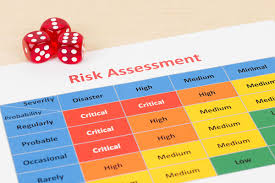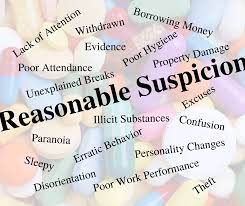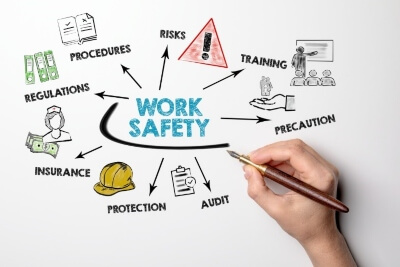Are Naloxone Kits Required in the Workplace?
Jan 31, 2023 JHSC, Occupational Health & Safety Regulations, Safety Culture, Safety TrainingAre Naloxone Kits Required in the Workplace?
As part of a news release by the Ministry of Labour, Immigration, Training and Skills Development (MLITSD) on Dec. 14th, 2022, it was announced that commencing June 1st, 2023, employers must provide naloxone in the workplace if specific circumstances prevail. From this announcement, Ontario businesses were left questioning whether they need to have naloxone kits in their workplace. The quick answer is maybe. When we first started hearing that the ministry wanted to legislate the availability of naloxone in the workplace, statistics showed that over 30% of those who died of opioid overdoses worked in the construction sector. We heard chatter about it applying to all “high-risk” workplaces; our first thoughts were of construction sites, restaurants, bars, or other public workplaces with a history of people overdosing. We were surprised to see that the ministry has defined it as “Employers must provide a naloxone kit when an employer becomes aware, or ought reasonably to be aware, of the following scenarios:
- There is a risk of a worker opioid overdose
- There is a risk that the worker overdoses while in a workplace where they perform work for the employer
- The risk is posed by a worker who performs work for the employer
In the news release posted by the MLITSD in December 2022, where it states the above, it also went on to say the following:
- If all of these scenarios are present, the employer must comply with the OHSA requirements to provide naloxone in the workplace
- If any one of these scenarios are not present,an employer does not need to comply with the OHSA requirements to provide naloxone in the workplace
That tells me that if any of the above variables are not present you do not have to have a naloxone kit available to your workers. So, the answer to the question of “do we need to have naloxone kit”, seems to be pretty easy to ascertain. Not so fast, let’s explore the three (3) elements that must be present.
First, where it says, “there is a risk of a worker opioid overdose”, how do you make that determination? How can you say with certainty that there is or isn’t a risk? Those who die of drug overdoses come from all walks of life, so you cannot honestly say that there is no risk at your workplace because you do not know who may be using hard drugs (hard drugs we are referring to are drugs that contain opioids and are causing people to overdose and die). So again, how can the employer become aware of or determine risk? This is where your JHSC Committee can assist; they can conduct a risk assessment, discover evidence of opioid use during regular workplace inspections, or have previously had an incident of an overdose in the workplace. Also, a worker who uses opioids may voluntarily disclose this risk to their manager or supervisor. Keep in mind that these requirements do not apply to non-workers, such as customers, patients, or other public members.
When it comes to the question of “there is a risk that the worker overdoses while in a workplace where they perform work for the employer”, again, if there is a possibility of a worker that uses hard drugs, how can you say that it won’t happen in the workplace. Those with drug addictions may require those drugs to function in a normal capacity and, therefore, may use drugs more than once a day. Is there any way to say for certain that they will not take them while at work? Conducting a risk assessment of the workplace may be a valuable tool in determining the risk of an incident while the worker is performing work in the workplace.
Lastly, when it says, “The risk is posed by a worker who performs work for the employer.” They are clearly saying that the risk only applies to the workers performing work for your employer. It does not apply to workers of other employers onsite at your workplace, such as sub-contractors or worksites shared by multiple employers.
After pondering all the information conveyed above, how does a business make the decision to place naloxone kits in the workplace and train staff as prescribed? The answer is that a workplace needs to conduct a risk assessment to glean a broad and objective view. This risk assessment should be done by those with a good understanding of the workforce, ideally, someone who works with the workers. This would include members of your health and safety team (safety reps), supervisors, union (if any) and the workers. Industrial Safety Trainers has developed a “Drugs in the Workplace Risk Assessment” that you can use to determine whether your workplace needs to have naloxone nasal sprays in your workplace. Click here to download that risk assessment.
workplace needs to conduct a risk assessment to glean a broad and objective view. This risk assessment should be done by those with a good understanding of the workforce, ideally, someone who works with the workers. This would include members of your health and safety team (safety reps), supervisors, union (if any) and the workers. Industrial Safety Trainers has developed a “Drugs in the Workplace Risk Assessment” that you can use to determine whether your workplace needs to have naloxone nasal sprays in your workplace. Click here to download that risk assessment.
As of December 2022, naloxone nasal spray kits are free to all employers, one per workplace, through Ontario’s Workplace Naloxone Program. That’s great to hear, but you should also be aware that this offer is only available for the next two (2) years, after that, we are not sure what, if any, will be the costs of maintaining those kits. Naloxone has an expiry date written on the ampoules or vials or on the nasal spray device. They must be stored at room temperature, between 15 and 25 degrees Celsius and protected from light.
How many naloxone kits do I need to have? Good question. Under OHSA, employers must provide at least one naloxone kit in each workplace in which they are aware, or ought reasonably to be aware, of the risk of one of their workers having an opioid overdose. If there is any reason to believe there may be multiple employees at risk, then employers may determine multiple kits are needed for the protection of their workers (clause 25 (2)(h) and subsection 25.2(5) of the OHSA). This differs from Regulation 1101 for First Aid. This regulation states that a workplace requires a first aid kit where it is accessible to all workers. It would be acceptable to store a naloxone kit with the first aid kit but remember, dependent upon your workplace, consideration may need to be given towards a requirement for multiple naloxone kits within the workplace.
Various organizations offer naloxone kits. The MLITSD has secured the Canadian Red Cross and St. John Ambulance as program providers, but there are also several select participating pharmacies. For guidance, click here to search a map for the closest pharmacy or community organization where you can pick up a kit. As supporters of the prevention of drug overdoses, Industrial Safety Trainers has been providing free naloxone kits to businesses for over three years now and can be contacted if you need more than one kit (until such time as they remain free for public distribution).
The Ontario Naloxone in the Workplace Program has defined what is needed to comply with training requirements. The MLITSD has indicated that training will be offered for free, for up to two workers per workplace, by the Canadian Red Cross, and St. John Ambulance. I understand that one must register online via one of these approved program providers to be granted access to approved online training.
Who does a workplace train? The requirements indicate that the kit is in the control of a worker who,
- works in the vicinity of the kit
- has received the required training
When one considers who needs the training in administering naloxone nasal spray, the more staff who know how and when to administer the sprays, the better. Front-line supervisors should have this training in addition to the first aid persons. You will also need to consider vacation coverage, sick days, along with shift schedules when determining who of your workforce will be trained.
Another consideration is how to train front-line supervisors to recognize signs of substance abuse and impairment at work due to drug use or consumption of alcohol, as well as what to do if they suspect a worker is impaired. While many companies have updated their Drug and Alcohol Policies to reflect the changes in the legalization of cannabis in 2017, many companies haven’t addressed training for Supervisors and Managers on how to determine impairment and what to do if you suspect a worker is impaired. This is a huge gap as impaired workers pose a grave safety risk, not only to themselves but also to fellow workers and members of the public.
Management is expected to act when it is suspected that a worker may be impaired. How does a business educate and train the management to initiate appropriate actions related to substance abuse in the workplace? Industrial Safety Trainers has worked with the OPP drug recognition experts to develop a training program for frontline supervisors called Reasonable Suspicion. This extremely interactive training program will allow supervisors and managers to recognize what impairment looks like, learn what the police are looking for when determining impairment, how to investigate possible impairments in the workplace, and how to deal with impaired workers. This program also educates on looking for changes in their workers’ performance or demeanour that may be a precursor to drug and alcohol usage, which can help prevent drug overdoses and accidents in the workplace. Visit our website for additional information on this unique health & safety training program.

We should all be aware that the number of opioid-related deaths is now considered a crisis in this province. It is not only recreational users at risk; anyone who takes opioid medication for pain management can also experience an overdose. Providing a naloxone kit and appropriate training within your workplace not only meets legal requirements to protect your workers, but it can also save someone’s life!
Randy Dignard,
Senior Safety Consultant






